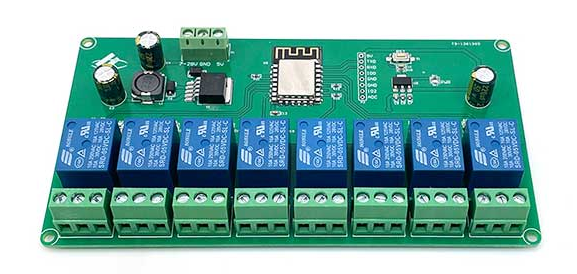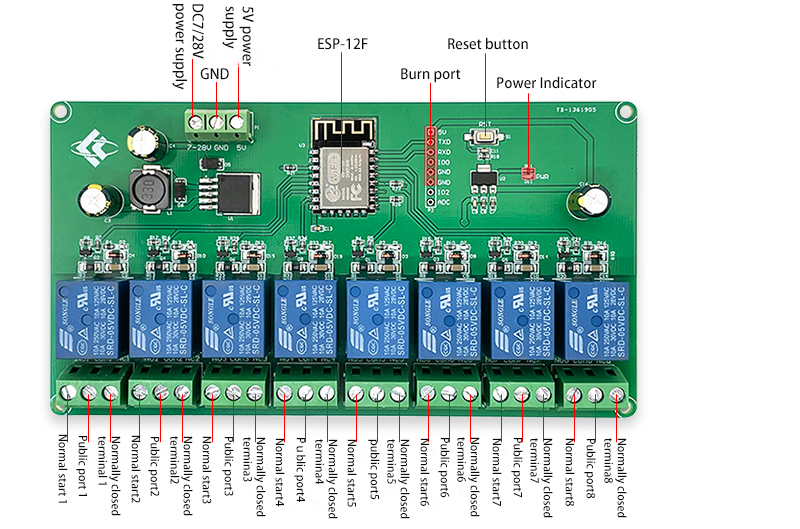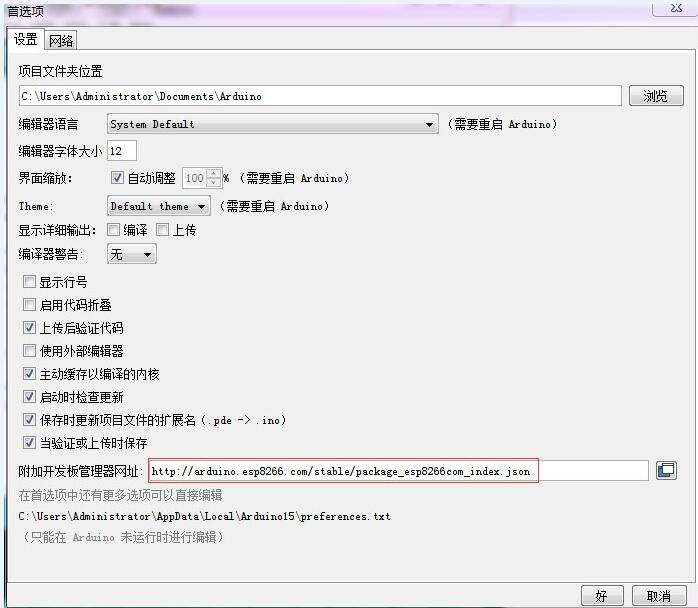LC-WF-1-8
Product name
5V/7-28V power supply ESP8266 WIFI eight-way relay module ESP-12F development board secondary development
Overview
LC ESP8266 8-way relay development board is equipped with ESP-12F WiFi module and supports DC7-28V/5V power supply. Provide Arduino development environment reference code, suitable for ESP8266 secondary development learning, smart home wireless control and other occasions

Features
- Onboard mature and stable ESP-12F WiFi module, large capacity 4M Byte Flash
- Power supply mode supports DC7-28V/5V
- Onboard WiFi module RST reset button
- ESP-12F supports the use of development tools such as Eclipse/Arduino IDE, and provides reference programs in the Arduino development environment
- On-board 8-way 5V relay, output switching signal, suitable for controlling loads whose operating voltage is within AC 250V/DC30V
- Onboard power indicator and relay indicator
Interface Description
1. Interface Introduction
Board size: 148*79.8mm Weight: 140g

Burn port: GND, RX, TX, 5V of ESP8266 are respectively connected to GND, TX, RX, 5V of the external TTL serial port module. When downloading, IO0 needs to be connected to GND. After the download is completed, disconnect the connection between IO0 and GND
Relay output
NC: normally closed terminal, short-circuit with COM before the relay pulls in, and hang in the air after the pull-in
COM: public port
NO: Normally open, suspended before the relay pulls in, and short-circuited with COM after the pull-in
| Serial number | Name | Function description |
| 1 | ADC | A/D conversion result. Input voltage range 0~1V, value range: 0~1024 |
| 2 | IO2 | GPIO2; UART1_TXD |
| 3 | TXD | UART0_TXD; GPIO1 |
| 4 | RXD | UART0_RXD; GPIO3 |
| 5 | GND | Power ground |
| 6 | 5V | 5V power supply |
Connection instructions
Arduino development environment setup
ESP8266 supports Eclipse/Arduino IDE and other development tools. It is relatively simple to use Arduino. The following is how to build the Arduino development environment
1. Install Arduino IDE 1.8.9 or the latest version
2. Open the Arduino IDE, click File--Preferences in the menu bar, enter the preferences and click Add Network in the "Additional Development Board Manager URL"
http://arduino.esp8266.com/stable/package_esp8266com_index.json

3.Click Tools--Development Board--Development Board Manager in the menu bar, and then search for "ESP8266" to install Arduino's support package for ESP8266 2.5.2 or the latest version

Note:
Since the download URL is from a foreign country, the access speed is relatively slow, and there may be download errors. Just try a few more times when the network is good.
Program download: